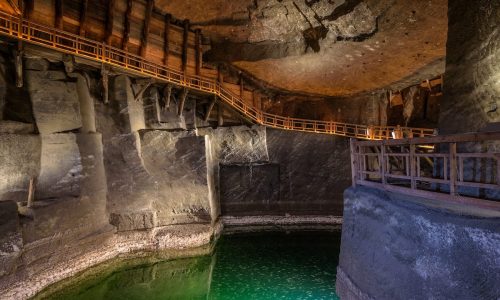For centuries, mining has been a key element in the development of many regions around the world. The mines and associated settlements were economic and social centres that shaped local identity and culture. Today, the remains of former mines, adits, historic buildings and traditions associated with mining are valuable cultural heritage. However, mining also poses challenges for the protection and preservation of these historic sites.
Mines as testimony to the past
Historic mines, pits and mining machinery are testimony to the past and to the technical achievements of mankind. Such historic sites are a reminder of the hardships and sacrifices made by the miners’ work and of the importance of mining for the development of many communities. Their preservation is not only important for future generations, but can also attract tourists and support the development of local tourism.
An important aspect of preserving mining heritage is education and raising public awareness of its importance. Local communities, as well as authorities and institutions, should work together to highlight the value of these historic sites and encourage their conservation. Popularising knowledge of mining heritage can also lead to greater acceptance of conservation projects.
Historic mining sites have the potential to attract tourists and generate local income. Properly planned and protected, they can become attractive tourist destinations. Offering tours of adits, mining museums or organising festivals and themed events can contribute to the development of local tourism.
Successes and inspiration around the world
There are many examples of success stories in the protection and preservation of mining heritage around the world. Various conservation projects and community initiatives demonstrate that it is possible to make effective and sustainable use of these historic sites. Their successes can serve as inspiration for other communities seeking to protect their mining-related cultural heritage.
An example of such success can be seen in Wieliczka in Poland, which is famous for its salt mine, a UNESCO World Heritage Site. Thanks to properly thought-out tourism and conservation projects, Wieliczka attracts tourists from all over the world, while at the same time preserving its unique cultural heritage. Similarly, in the Silicon Valley area of California in the United States, a number of initiatives have been carried out to protect and preserve the historic sites associated with the silicon mining industry, which played a key role in the development of the region.
Cooperation and involvement
In the protection and preservation of mining heritage, the involvement and cooperation of local communities is crucial. It is the local people who know most about the history of their region and have an emotional connection to historic sites. Fostering civic participation and involving local residents in decision-making regarding mining heritage contributes to a better understanding of social and cultural needs and can provide greater support for conservation projects.
Public-private partnerships also play an important role in mining heritage conservation. Local authorities, NGOs, cultural institutions, companies and experts can work together to develop coherent strategies for the protection and use of these sites. These partnerships can contribute to fundraising, knowledge sharing and more efficient use of resources.
Summary – Mining heritage as a treasure for the future
Mining heritage is not only a collection of historic sites, but above all a cultural and identity wealth. The protection and preservation of these historic sites require public involvement, involving local authorities, NGOs and experts. Responsible management of mining heritage and its promotion as an attractive cultural value can contribute to the development of local communities and ensure that this heritage is a treasure for future generations.





